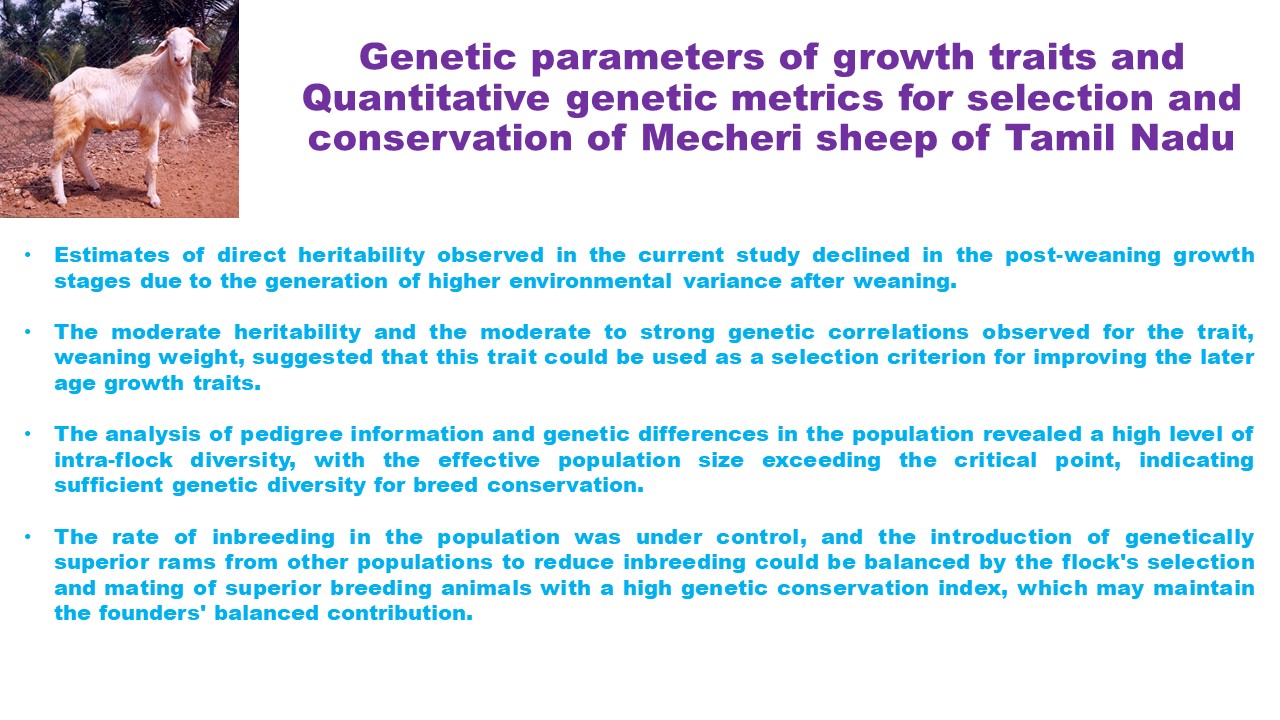Determining genetic and non-genetic sources of variation in a breed is vital for the formulation of strategies for its conservation and improvement. The present study was aimed at estimating the (co)variance components and genetic parameters of Mecheri sheep by fitting six different animal models in the restricted maximum likelihood method, with a preliminary investigation on the performance of animals for non-genetic sources of variation. A total of 2616 lambs were studied, and varying levels of significance were found for the effect of period, season, parity of dam and birth type on different body weight traits. Direct heritability estimates derived from the best animal model for body weight at birth, 3 months, 6 months, 9 months and 12 months were 0.21, 0.24, 0.10, 0.15 and 0.09, respectively, and maternal heritabilities of the corresponding traits were 0.12, 0.05, 0.04, 0.04 and 0.04, respectively. The genetic correlations between body weight traits were all positive and moderate to strong except for birth weight with the other body weight traits. The significance of non-genetic factors studied in this work demanded a correction to improve the accuracy of the direct selection of lambs for body weight traits. The estimated genetic parameters identified the weaning weight as a selection criterion for the improvement in body weight of Mecheri lambs at different ages. Inbred individuals accounted for approximately 13% of the total population in the Mecheri sheep population studied. There were 877 founders in the population, and the actual effective size of the population was 128.48. The population's mean generation interval was 3.26. The mean inbreeding values ranged from 0.005 to 0.010 across generations. The population's average relatedness ranged from 0.001 to 0.014 across generations. Individual inbreeding was found to be 0.45 per cent for the entire population and 3.4 per cent for the inbred population.

